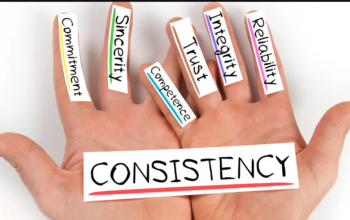Bosses might want to take notice if employees view their jobs as “the daily grind.”
A disgruntled and disengaged workforce can undermine production and harm customer relations, while a happy, engaged workforce does the opposite.
“If you take care of your employees, they will be better prepared and far more motivated to take care of your customers,” says Shawn Burcham (www.shawnburcham.com), founder and CEO of PFSbrands and author of Keeping Score with GRITT: Straight Talk Strategies for Success.
“Ideally, you want employees who think and act like owners.”
Burcham says one of the first steps toward cultivating such an environment is to communicate openly with employees. And that may be even more crucial today because newer generations entering the workforce want to know the “why” of what they are doing.
“Millennials value truth and honesty,” Burcham says. “They also are looking for personal growth, education, and continuous learning. If companies want to scale, then they need to embrace millennials and work to create an environment where they are engaged.”

He suggests four ways leaders can help their employees love what they do:
- Have fun at work. People spend more hours at their jobs than doing just about anything else, Burcham says, so the time might as well be enjoyable rather than drudgery. Some simple ways people can have fun at work include cracking jokes, decorating their work areas, or celebrating employee birthdays. For Burcham, the work itself is fun. “As a leader, I want to provide an environment conducive to having fun,” he says. “I also let our employees know that it is up to them to make having fun a reality within their job and their department.”
- Coach them up. All employees must be willing to learn at a pace consistent with the company’s growth, Burcham says. “Usually, we hire people with a skillset that enables them to scale with us,” he says. “Sometimes, though, we have employees who are challenged to ‘make the leap’ with us. When that happens, we work with them to find a role on our team where they can excel. We want to provide them with every opportunity and tool we can to help them adapt.”
- Maintain a positive attitude. Most successful people exude a positive attitude, are optimistic, and have a never-quit personality, Burcham says. “Who wants to work in an environment of doom and gloom?” he asks. One way to cultivate an upbeat workplace is to strive to hire only “A” players, people who want to be the best at their jobs and take pride in making positive contributions. “But anyone can be or become an A player,” Burcham says. “It simply revolves around having a positive attitude along with a desire to learn and constantly improve.”
- Show appreciation. Employees want to know that the bosses – and their coworkers – appreciate them, so it’s important to find ways to show them. Burcham says at his company new hires are welcomed by dozens of emails from their team members before they even arrive for the first day of work. When they start, two or three dozen employees gather to greet them with a high five. “For our team, it’s all about gratitude,” Burcham says. “It’s not, ‘I have to go to work today.’ It’s, ‘I get to go to work today.’ ”
“I think the real key,” Burcham says, “is to hire people who are already motivated and then put them in an environment where they can excel. Engaged employees are fun to work with and they will go the extra mile for their customers as well as their peers.




